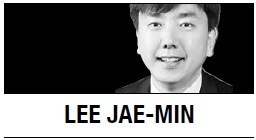Since the inauguration of the Trump Administration, South Korea has been holding its breath. The fate of the five-year-old Korea-United States Free Trade Agreement (once termed as “KORUS” FTA hinting at chorus) has suddenly become uncertain. The dreaded term “termination” finally surfaced during President Trump’s interview on April 28, where he described the trade pact as “a horrible deal that should’ve never been made,” vowing renegotiation and possible termination. This has set South Korea scrambling to prepare for the first encounter of the two governments to discuss this issue: The summit meeting between President Trump and President Moon to be held in Washington, DC later this month.
A trade agreement can survive only if, and as long as, it can ensure a win-win situation for both parties. If one party believes it is being shortchanged, no words of friendship or good will could save it. At the end of the day, in a trade deal money talks. An aggrieved party has the option of triggering the kill switch (called a termination clause) embedded in a trade pact. The KORUS FTA is no exception.
So, it is important and critical to read the balance sheet of the KORUS FTA carefully and accurately when this issue is put on the table this coming June. If the balance sheet does indicate one side stands to gain more systematically, then the playing field should be leveled. Otherwise, it would be simply a matter of time or a matter of patience before the “losing” party invokes termination. In light of this, the upcoming negotiation provides a good occasion for candid discussions between the two major trading partners.
Reading the KORUS balance sheet, however, requires understanding of some unique aspects of the trade pact. First is how to account for a time gap between goods trade and services trade in terms of “market opening” effect. The effect of goods trade liberalization (i.e., tariff cuts) is usually immediate: You just don’t pay extra tax anymore at the border. Meanwhile, services trade commonly demands prior planning and a time-sequential process: in a foreign country you need to rent an office, hire staff, undergo registration and run advertisements. So, here market penetration takes more time.
Between the two countries, the United States has a competitive edge in services trade. And the five years’ time may not be sufficient yet for full penetration into the Korean market by competitive US service providers. USTR’s own assessment in the National Trade Estimate of March 31, 2017 regards KORUS as “provid[ing] meaningful market access commitments across virtually all major services sectors” of Korea. While Washington has registered concerns over implementation of the services market opening in certain sectors of Korea, this time lag in services trade is a factor to be reflected in the KORUS assessment.
Reading the balance sheet properly also requires recognition that the pact is not just about market liberalization and tariff reduction. It is (at least intended to be) much more than that. The almost 1,000-page treaty texts cover virtually the entire spectrum of economic activities. For instance, facilitation and protection of foreign investment is a core concept. At least on the part of Korea, the KORUS FTA has induced more Korean investment in the US, totaling 51 billion dollars during the five year period, more than double the US investment in Korea during the same period. Transparency and due process in the regulatory regime are another examples. Again at least on the part of Korea, the FTA has played a pivotal role in attaining these objectives. The USTR’s 2017 NTE attributes “improvements in the transparency of Korea’s regulatory system” to KORUS. We know that there is still a long way to go, but it seems to be working, albeit slowly.
A final score sheet of KORUS will only be available when all these multiple facets of the agreement are fully taken into account. And yet, quite a few people in the two countries tend to look at only the tip of the iceberg such as trade surplus or deficit in a given year. One needs to look at what is below the water at the same time.
Once the two counties sit together sometime soon, they will have to see to it that the trade pact reflects long-term trade interests of the two countries in a balanced manner. If not, adjustment should be made and a compromising ground should be found.
Korea and the United States have sung many songs together in chorus, and most of the time very successfully. It is time to bring this chorus back to KORUS. Disbanding the choir just because of some miscues and missed tunes would be like throwing the baby out with the bathwater.
By Lee Jae-min
Lee Jae-min is a professor of law at Seoul National University. He can be reached at jaemin@snu.ac.kr. -- Ed.





![[From the Scene] Monks, Buddhists hail return of remains of Buddhas](http://res.heraldm.com/phpwas/restmb_idxmake.php?idx=645&simg=/content/image/2024/04/19/20240419050617_0.jpg&u=20240419175937)
